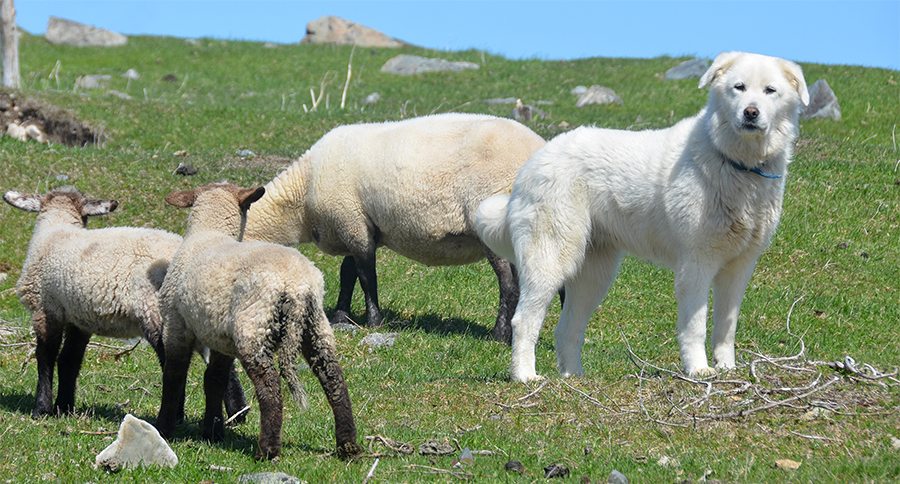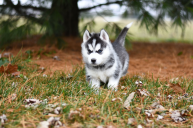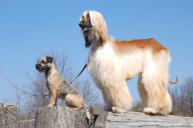The Great Pyrenees, or "Pyr" for short, is the 66th most popular dog breed in America.
The Great Pyrenees dog is known by many names in various parts of the world, including Le Grande Chien des Montagnes ("The Big Dog of the Mountains"), Le Chien des Pyrenees ("The Dog of the Pyrenees"), and, more commonly, the Pyrenean Mountain Dog.
The Pyr has a long history. Remains of the breed have been found in the fossil deposits of the Bronze Age (1800-1000 B.C.). It is believed that the breed originated in Central Asia or perhaps Siberia, from a group of white flock guardian dogs, around 10,000-11,000 years ago. They later arrived in Europe with the Aryan migration.
History of Great Pyrenees Dog Breed
For hundreds of years, the Great Pyrenees breed was primarily used by shepherds, most notably those who lived and worked in the Pyrenees Mountain region of southern France and northern Spain. Their double coat is notoriously weather resistant making it perfect for cold weather.
In the mid-1600s, Basque fisherman took the Pyr to Newfoundland. There, they crossed it with the black curly-coated retriever favored by English settlers. The cross produced the Landseer Newfoundland.
It was also during the 17th century that the Pyr became a favorite companion of French nobility. Not until 1824 did the royal dog breed arrive in the U.S., when General Lafayette brought two males over for his friend J.S. Skinner, author of "The Dog and the Sportsman."
In 1931, Mr. and Mrs. Francis V. Crane brought a number of Great Pyrenees over to the U.S. in an effort to launch the breed in North America. Their efforts were successful, and the Great Pyrenees received American Kennel Club (AKC) recognition in 1933.
Health
The Pyrenees dog is generally healthy, but suffers from some of the same issues that many other large dogs are prone to, such as elbow and hip dysplasia, luxating patellas, and eye problems among others. Bloat is a condition specific to the breed that causes the stomach to twist and distend—a life threatening issue that should be addressed with your vet immediately. If you decide to adopt a Great Pyrenees, make sure to shop with a reputable breeder, and always keep an eye on your furry friend's health.
Characteristics
Today, the Pyr is a beloved companion and guardian. Although most never see sheep or a show ring, they are nonetheless as loved as ever and are gaining recognition in many other fields, such as rescue and therapy, due to their intelligence and versatility.
These gentle giants make great family pets, as their disposition is calm and not easily excitable. Don't let their chill demeanor fool you, though—this breed is ready to spring into action when their family is threatened. Originally bred to watch over their flock, this breed will conserve energy until they need it to address a threat to their territory. Because of this, the Pyr doesn't need as much exercise as many breeds, but will do well with regular walks.
The Great Pyrenees Club of America is the official national breed club and a great source for all things Pyr.
Is there a special Pyr in your life? Tell us on the Wide Open Pets Facebook page!
This article was originally published October 7, 2017.
READ MORE: Living With Bernese Mountain Dogs: Easygoing Family Dogs Who Drool




